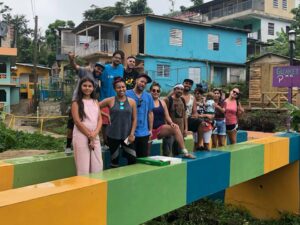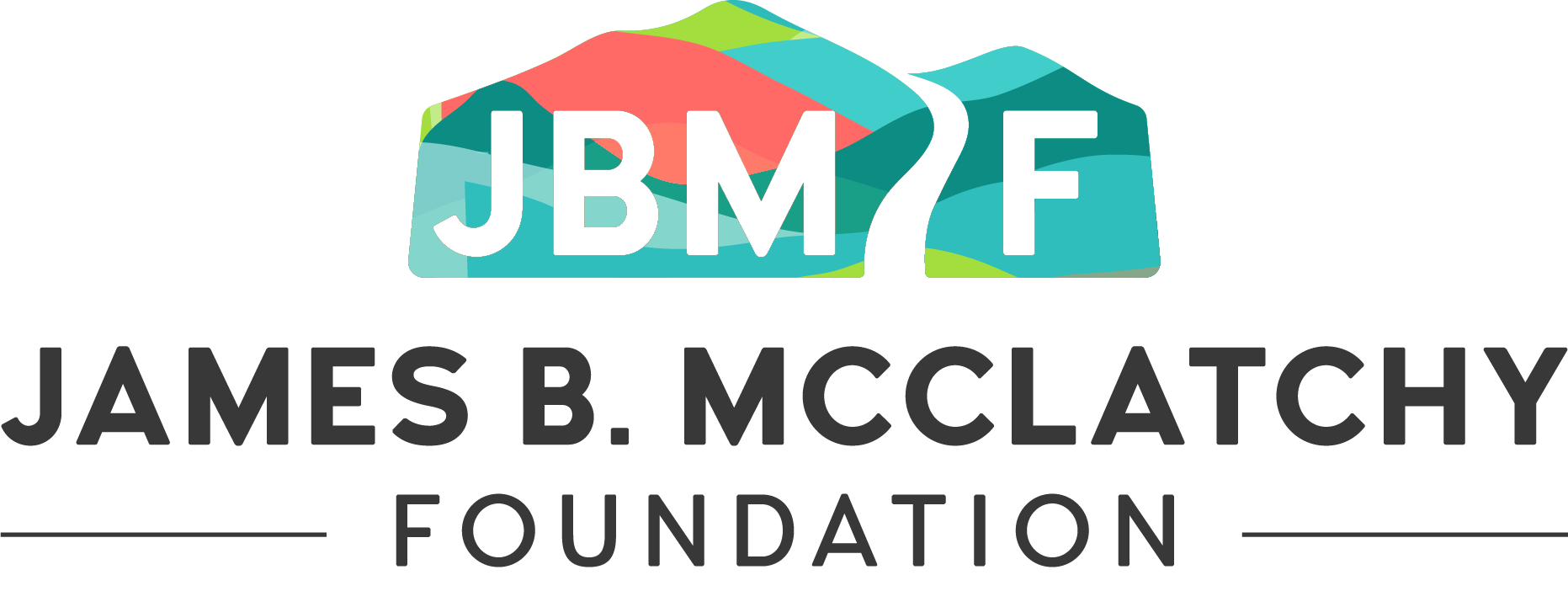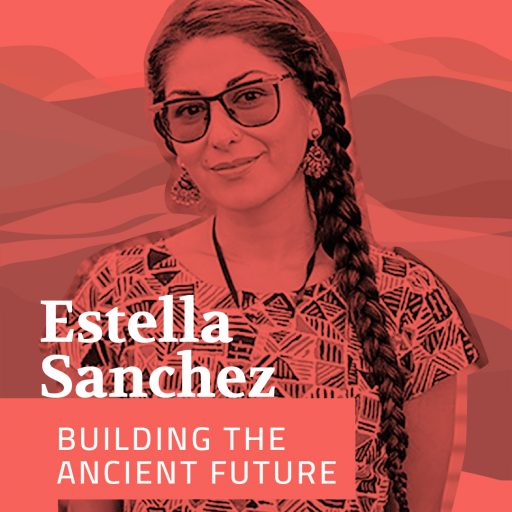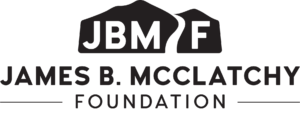Sol Collective is a community-based partnership and center dedicated to art, culture, activism, and community health. This is Estella’s StoryEngine*. (Spanish version here.)
“If people really want to understand how to work with us in equitable ways, we’re going to have to be true to our authentic selves.”
The Central Valley – From Pain Comes Beauty
My story begins as the daughter of immigrants, trying to figure out how to keep the culture and the traditions that I had from my parents intact while learning more about traditions and culture on my own journey. My work as the founder of Sol Collective is definitely a culmination of my experiences. It started as an effort to dive into issues of identity as children of immigrants, and has become a place that really celebrates and nurtures that identity, those traditions and that culture.
The Central Valley is this agricultural epicenter that brought our parents here through working in agriculture. My parents come from Mexico and were drawn to this area to work in the fields; a lot of Latinos’ parents did the same.
There’s a lot of beauty with what the Central Valley has given the rest of the region, our state, and the country. But it has come at the suffering and pain of those first peoples who immigrated here at the start, or were brought here to build that wealth and abundance for our state and for the nation.
I see it as an incredibly rich place because of the culture and the fertility of the land. The abundance and beauty come from all these cultures and groups that are either drawn to or brought to this space.It feeds so many and so much comes out of this region. That fertility also comes from the sweat and tears of a lot of immigrants. If we move even further back, it really was that richness of the gold in Sacramento. We always talk about the gold rush that created the city, but that richness was already here prior to that, born of the first peoples.
This story of fertility actually reminds me of Oshun. We’re in her home. We have two rivers that cross through the Central Valley and make it an epicenter, connecting Northern and Southern California. These water sources allow for abundance and life to continue for the region, the state, and for the nation.
The Collective | A Vision of Intersectionality
Sixteen years ago, we created Sol Collective as a space centered around art, culture, activism, and community health. The interconnection of all of these different things wasn’t understood then. We’d get a lot of questions about who we were, and how these things intertwined, so it was a challenge to be ahead in that space. It often came off as having an unclear vision.
 Out of the gate, we knew these things intersected, and that there was no separation between our cultural identity, community wellness, social justice, and equity.
Out of the gate, we knew these things intersected, and that there was no separation between our cultural identity, community wellness, social justice, and equity.
We’re finally at a place where the intersection is understood. Collectives are everywhere. We don’t have to try to explain what we’re doing anymore. It’s the norm.
In retrospect, we helped to lay a foundation locally and regionally for folks to have a model of how those intersections worked; we made it easier for people to do that work. For the next generation, they don’t have to learn all of these different things because there is already a successful model that other people can just point to and say, “Oh yeah, we get it.”
When we hit the 10 year mark in 2020, we knew that we wanted this to go beyond us as founders, that this place was going to continue. We put out a collective vision and prayer for a building. After three years, we were able to purchase one. This building, the space, and the 501c3 – this thing that we planted and have watered and kind of struggled through – is now going to live beyond us. The energy of this space will lift communities of color long after we are gone.
One day during a meeting, the father of one of our program participants started telling us a story. He said “you guys had these disposable cameras for a show and [my daughter] took pictures. That completely set up the trajectory of her life. She runs a gallery in Berkeley now.” Even after 10 years, stories like this always help me feel incredibly humbled by the work, knowing that these things that we put together actually have had an impact.
I really do find a sense of fulfillment and peace in doing the work – putting out big visions and accomplishing them. Being in nature and replenishing my energy and diving right back into the work gives me a sense of joy and peace.
Travel, Cultural Exchange and Remembering our Power
Traveling has been the fuel to a lot of the work that we’ve done. I would have never been able to envision what we could do in our space if I hadn’t had the opportunity to go to different cities and countries to see what was possible, what made sense and is relevant for our city.
Before I started the organization, I co-founded a project called the Libertad Cultural Exchange tours where my godbrothers and I took a group of artists, educators, dancers, poets, and emcees from the U.S. to travel across the Caribbean and Cuba over three years. I was able to see how a variety of community issues and solutions were addressed. I saw murals in Vieques, Puerto Rico being used to educate and fight against inequities. I visited community healing spaces, met traditional healers, and witnessed trauma-informed healing approaches. I took a crew of folks to Oaxaca to network with a sister collective.
In New Mexico specifically, I got to see people who look like me in positions of leadership and government. I saw a traditional sweat lodge for systems-impacted youth and bus loads of incarcerated young people working with healers as part of their rehabilitation.
Traveling to create an intellectual and economic exchange with like-minded people, locally to globally, is a tool that we’ve integrated for the whole team as ongoing professional and personal development. I had to take the Board of Directors to a retreat for them to understand the impact of why it’s really important. We’d been deadlocked on some things for about a year and a half. In three days and on a retreat together, we got through all the issues right away. It’s given me a wider lens and a larger perspective.
For us as people of color, it’s very easy for our power to get swallowed up growing up here and going through the education system. When we get back to our countries of origin, where people of color are in leadership, we can remember our power and our ability to do things in a way that’s more in line with our own traditions and our culture. We need to continue to travel home and bring back that power with us.
The Ancient Future
After we bought the Sol Collective building, I felt we needed to start thinking about a succession plan. In thinking about other organizations led by people of color, the organizations would often suffer once the founder left, so it became really important for me to have some kind of succession plan while I was healthy, and the organization was healthy as well.
 We are moving into becoming a worker-directed nonprofit organization and are at the beginning of a three-year transition to this model. I’ve stepped back as executive director and want to leave a framework that is flexible and malleable. We realized we’ve always been a worker-directed nonprofit. The staff has always run things and the Board has always advised us, providing financial and legal oversight.
We are moving into becoming a worker-directed nonprofit organization and are at the beginning of a three-year transition to this model. I’ve stepped back as executive director and want to leave a framework that is flexible and malleable. We realized we’ve always been a worker-directed nonprofit. The staff has always run things and the Board has always advised us, providing financial and legal oversight.
Anytime there is growth for an organization there is a tendency for us as people of color to look at other institutions as models of success, usually based in white supremacy. We’ve always done things our own way. We burn sage at our board meetings; the elder speaks and then the youth speak. We’ve struggled with funders trying to stay true to ourselves, our story and our impact. A lot of how we help people and understand what’s happening in our community is story-based and not quantitative.
Our Board and our staff come from communities of color. We all bring the wisdom of our cultures and traditions. It really is something that feels good. There’s already so much wisdom around our healing and our wellness. We’ve asked the question “how do we bring that forward rather than trying to align with institutions that are not aligned or weren’t created to support us?” While we have to have a balancing act, we also have an obligation to continue to move things in this direction. If people really want to understand how to work with us in equitable ways, we’re going to have to be true to our authentic selves.
The next generation is everything we dreamed about. They took [the vision], owned it and are next level. They’re already in their power and they’re not asking for permission. I see our role as continuing to connect the past to the future, and to bring that ancestral learning so it doesn’t go away. We will continue to be a bridge for our next generation so that they don’t go a hundred miles per hour and forget that piece. This is probably the best role I see myself playing, moving forward.
At the core of our organization is art, culture, and activism. Before changing policy, you’ve got to change the culture. Art and culture have always been tools for narrative change and for cultural shifting. We always knew these things intersected and that art was integral to our healing and our wellbeing. People did not always understand that, but now they do.
*This story was produced as part of the Lifting Local Leaders storytelling program launched by the James B. McClatchy Foundation. “LIFT” references the inaugural pilot grantmaking program. These stories are guided by the StoryEngine methodology, an open-source, narrative-based, data collection tool developed by Loup Design.
Published on the James B. McClatchy Foundation website using the Creative Commons License https://creativecommons.org/licenses/by-nc-nd/4.0/ : Attribution-NonCommercial-NoDerivatives 4.0 International (CC BY-NC-ND 4.0)



